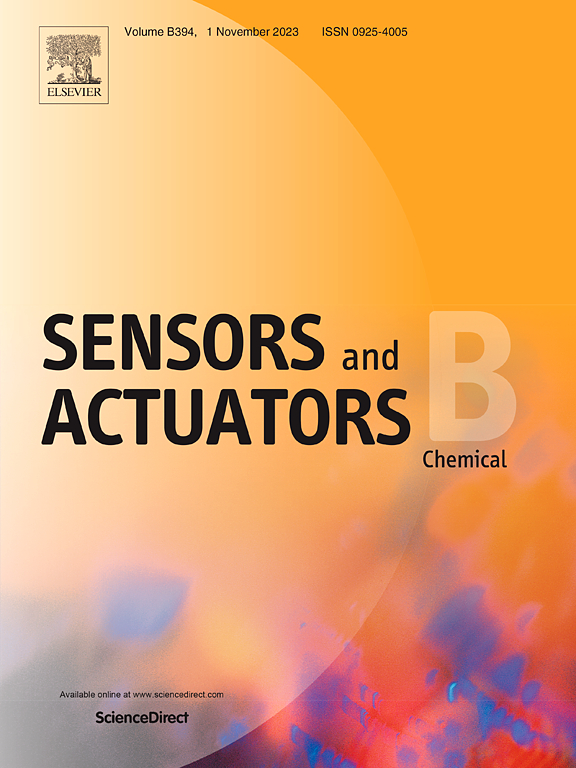Chemiresistive triethylamine sensor based on Rh2O3-loaded core-shell LaFeO3 porous spheres and DFT study to explain its behavior
IF 8
1区 化学
Q1 CHEMISTRY, ANALYTICAL
引用次数: 0
Abstract
In this work, LaFeO3 nanopowders with a core-shell structure were successfully synthesized using a facile hydrothermal method combined with wet impregnation to load varying amounts of Rh2O3 nanoparticles on the surface of core-shell spheres. Characterization results confirm that the synthesized Rh2O3-Fe2O3/LaFeO3 samples have a core-shell structure with uniformly distributed Rh2O3 nanoparticles on the surface. In gas sensing studies, the sensor based on 2 at% Rh2O3-Fe2O3/LaFeO3 core-shell spheres exhibited significantly enhanced performance (more than four times higher) for detecting triethylamine (TEA) compared to pristine Fe2O3/LaFeO3 core-shell microspheres. At an operating temperature of 200°C, the sensor showed a response value of 237 for 100 ppm TEA with a very low detection limit (50 ppb, 1.2) and much faster response/recovery time (47 s/12 s). The performance improvement is due to changes in the potential barrier at the Rh2O3 and Fe2O3/LaFeO3 interface, enhancing charge transfer. Additionally, based on first principles calculations, this work examines the adsorption energy and possible adsorption configurations of adsorbates. The Rh element acts as a negative charge center, which facilitates gas adsorption and reactions on the surface via a spillover effect. This study offers a promising candidate for TEA sensing and theoretical insights into high-performance sensor development.
求助全文
约1分钟内获得全文
求助全文
来源期刊

Sensors and Actuators B: Chemical
工程技术-电化学
CiteScore
14.60
自引率
11.90%
发文量
1776
审稿时长
3.2 months
期刊介绍:
Sensors & Actuators, B: Chemical is an international journal focused on the research and development of chemical transducers. It covers chemical sensors and biosensors, chemical actuators, and analytical microsystems. The journal is interdisciplinary, aiming to publish original works showcasing substantial advancements beyond the current state of the art in these fields, with practical applicability to solving meaningful analytical problems. Review articles are accepted by invitation from an Editor of the journal.
 求助内容:
求助内容: 应助结果提醒方式:
应助结果提醒方式:


